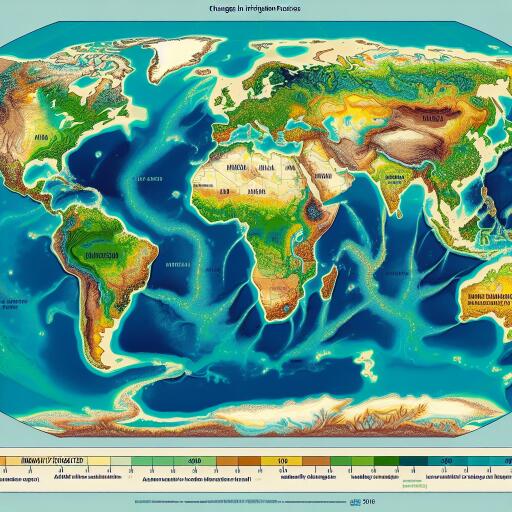
Revolutionizing Water Use: The Evolution of Global Irrigation Practices
Irrigation underpins global agriculture by enabling the cultivation of crops in regions that would otherwise be barren. Consuming over 90% of humanity’s water use, it’s the most water-intensive human activity. Yet, as essential as it is for boosting global crop yields, it poses a significant threat to freshwater resources. If not managed sustainably, irrigation can deplete water supplies needed for natural ecosystems and other human activities.
Recent research spearheaded by a team from the University of Delaware sheds light on the global trends in irrigation practices from 2000 to 2015. They delved into how irrigated areas have changed worldwide and the sustainability of these changes. Through a meticulous compilation of data, the team’s efforts culminated in the creation of global maps, illustrating the expansion or contraction of areas equipped for irrigation.
Their analysis, drawing from statistics across 17,298 administrative units globally, revealed a notable 11% increase in the global area equipped for irrigation (AEI) – from 297 million hectares in 2000 to 330 million hectares by 2015. This expansion, however, came with its share of challenges.
Alarmingly, half of the irrigation growth was categorized as unsustainable, especially prevalent in regions already facing water stress. Asia emerged as the epicenter of this trend, with India and China driving the majority of the growth. Specifically, India and Pakistan stood out, with over 86% of their irrigation expansion occurring in water-stressed areas. Similar patterns of unsustainable growth were observed in eastern China and parts of the central United States, notably around the Ogallala Aquifer.
Conversely, there are glimmers of hope and examples of sustainable expansion. Nations such as Brazil, Indonesia, Peru, Italy, and France have demonstrated that it is possible to augment irrigation facilities without compromising water sustainability.
The research underscores the complex dynamics of global irrigation practices. It highlights the balancing act between meeting immediate food security and rural development needs and the imperative of long-term water sustainability. The divergence in approaches underscores the varied priorities different regions place on water use.
Interestingly, sustainability in irrigation is not merely about the quantity of water used but its management relative to the availability of water from all sources — rain, rivers, and underground. This distinction emphasizes the need for region-specific strategies to manage irrigation practices sustainably.
The insights from this study offer a crucial understanding of current irrigation trends, pinpointing regions following sustainable paths and those where urgent intervention is needed. Such granular data is invaluable for policymakers and stakeholders, enabling strategic planning to address unsustainable practices and promote sustainable irrigation in the future.
Moreover, the research uncovered a gaping need for more comprehensive global agricultural data, prompting further exploration in this area.
As the world grapples with the dual challenges of water scarcity and the need to feed a growing population, sustainable irrigation practices are more critical than ever. The journey towards a more water-wise world is complex, but with informed policy and practice, it is a feasible goal. Collectively, the findings and datasets provide a roadmap for navigating this challenging terrain, marking a step forward in our quest for sustainable water use in agriculture.





Leave a Reply